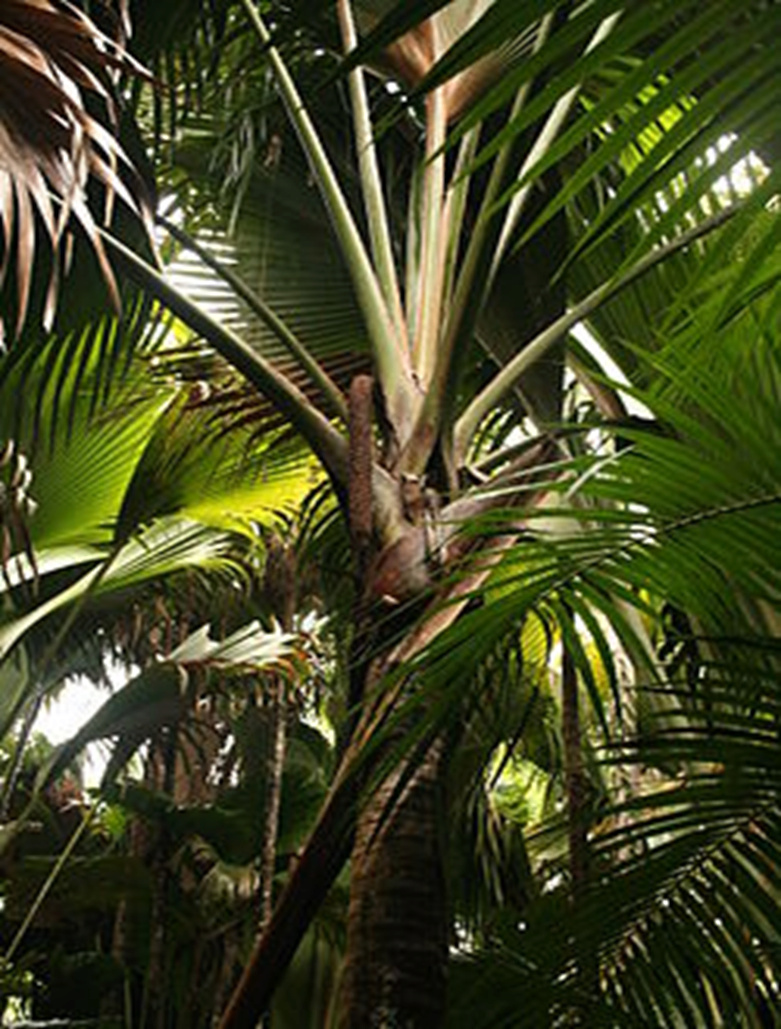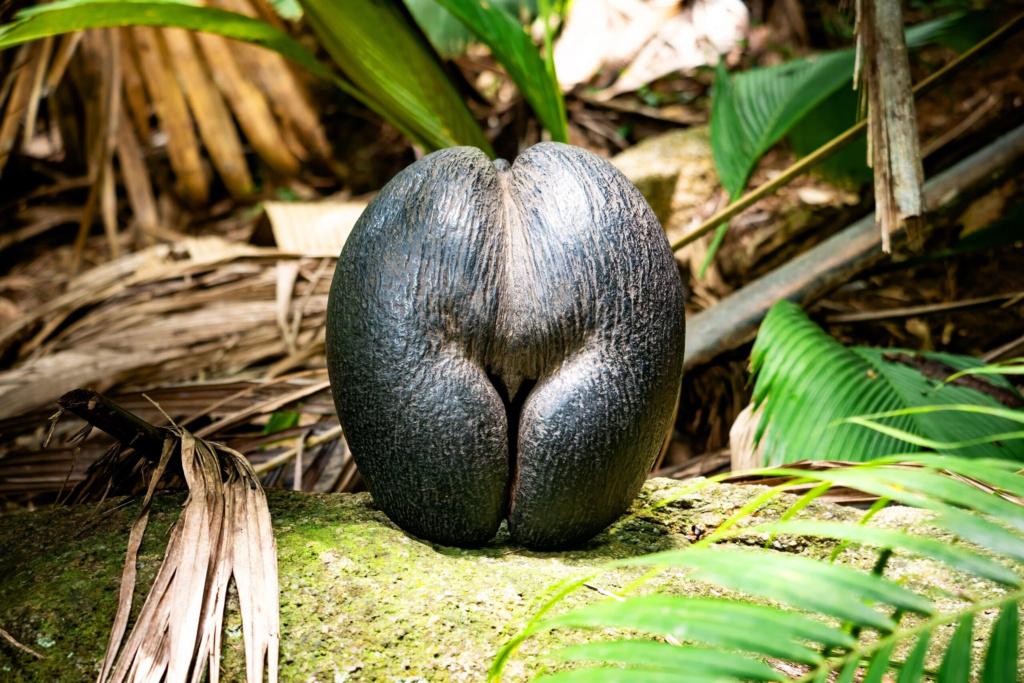Coco de mer, the largest seed in the world with a very suggestive shape, flourishes in “inbreeding” according to a new study

Legend: The Coco de mer, “coco buttocks” or sea coconut palm (Lodoicea maldivica) is a rare and giant fruit of the Lodoicea palm which only grows on the islands of Praslin and Curieuse in the Seychelles.
Coco de mer, or Coco Butts, is a palm tree native to the Seychelles, an archipelago located in the Indian Ocean, off the coast of eastern Africa. By metonymy, the term designates the fruit, the seed and the palm tree, even though it bears witness to a long-gone legend. Indeed, the name coco de mer was given to it around the 17th century, after sailors reported having encountered the seed floating in the Indian Ocean, near the Maldives Islands. It was then believed that a marine plant lost its fruits once ripe.
The endemic Seychelles palm, growing naturally on the island of Praslin and Curieuse, is unfortunately listed on the IUCN (International Union for Conservation of Nature) red list as an endangered species. With only around 8,000 mature trees remaining in the wild, the monotypic plant, that is to say, the only representative of its species, is threatened.
A recent study revealed that the Coco de mer, however, has an advantage over many species when it comes to reproduction. Unlike other living beings for which genetic diversity is essential for the survival of the species, the quality of young Coco de mer shoots is higher when the parent trees are more closely related.

Inbreeding among Coco de mers, a survival asset
Usually, mating or reproduction between closely related individuals results in a reduction in fitness or what scientists and botanists call “inbreeding depression” (a regression in growth rate, fecundity, accompanied by increased of the number of “non-compliant” individuals).
The vulnerability of species to inbreeding depression varies and the Coco de mer emerges as one of the favorites in the lottery of genetics and evolution. According to the study published on September 18, in Lodoicea maldivica (coco de mer), reproducing with “parent” (close) plants would improve the survival of the offspring.

The Coco de mer, known for its suggestive shape, is in reality the seed. It is found in the fruit which is borne by the female trees of the species. Here, an adult tree contains several fruits.
In a press release, ecologists and geneticists use the term “inbreeding euphoria” (literally translated as “inbreeding euphoria”) to explain the phenomenon, in opposition to “inbreeding depression”.
The result of evolution on an isolated island
Like all species, Lodoicea maldivica equips itself with means of survival. Being the only member of its species, it seems that the latter has adapted to its limited choice of breeding candidates. Since palm trees grow naturally on two islands, they are effectively limited to nearby plants to pollinate themselves.
Knowing that the coco de mer can take up to 50 years to reach sexual maturity, such an adaptation could indeed ensure a better chance of survival for the species.
Coco de mer, the “forbidden fruit”
Emblem of the Seychelles, the marketing of Coco de mer seed is strongly regulated.
The suggestive shape of the Coco de mer still makes it a highly coveted souvenir by tourists who are particularly amused by its appearance. The enormous seed, 40 to 50 cm long, is often compared to a woman's buttocks, and others see it as the entire pelvic part of the fairer sex. As shown in the header image, they even have a pubic-like “fuzz” in the middle of the front slit.

Legend: The suggestive shape of the seed, from the front.
For some, the seed is the forbidden fruit that Adam tasted in the Garden of Eden, the nickname of the Seychelles Islands.
As for the male of the species, he is not left out, because his appearance is reminiscent of that of the male reproductive organ.
A male specimen of the Coco de mer.

According to some legends, male and female trees come together for nights of passion where no one is watching. In any case, we can rejoice at the idea that this wonder of nature has found a way to ensure its survival.
Source: websites

